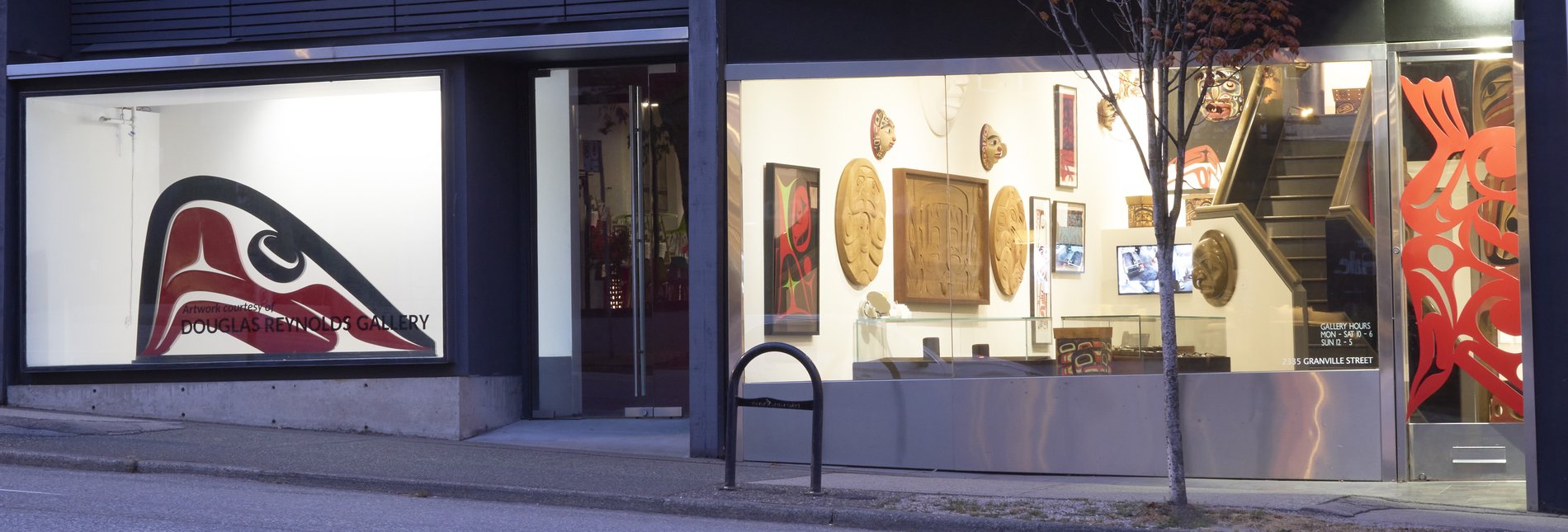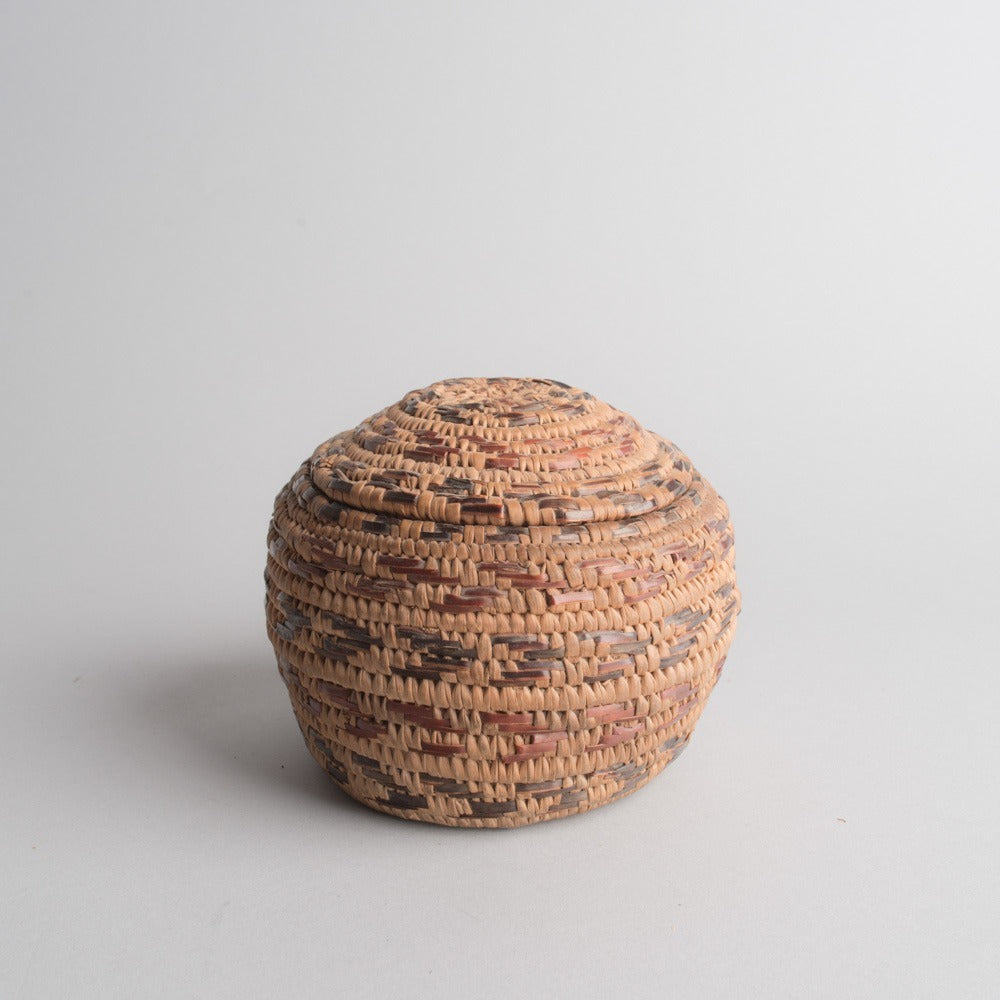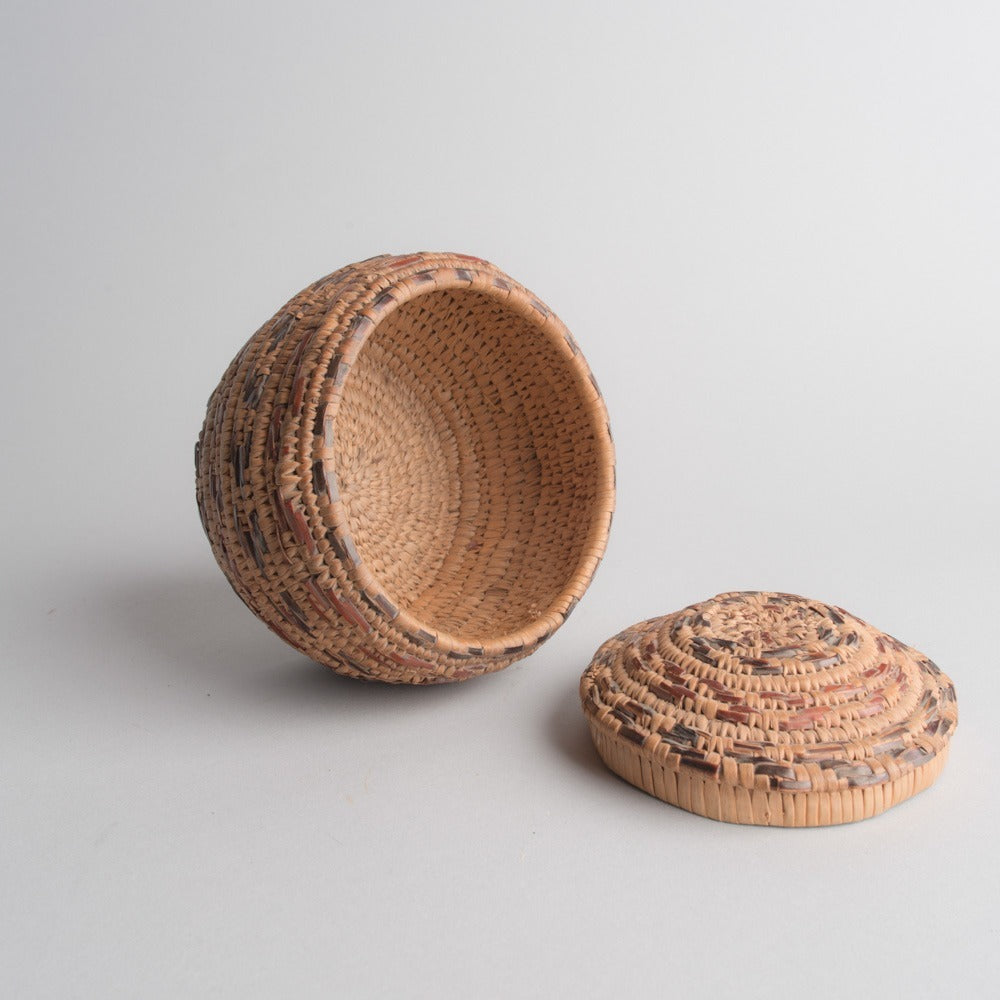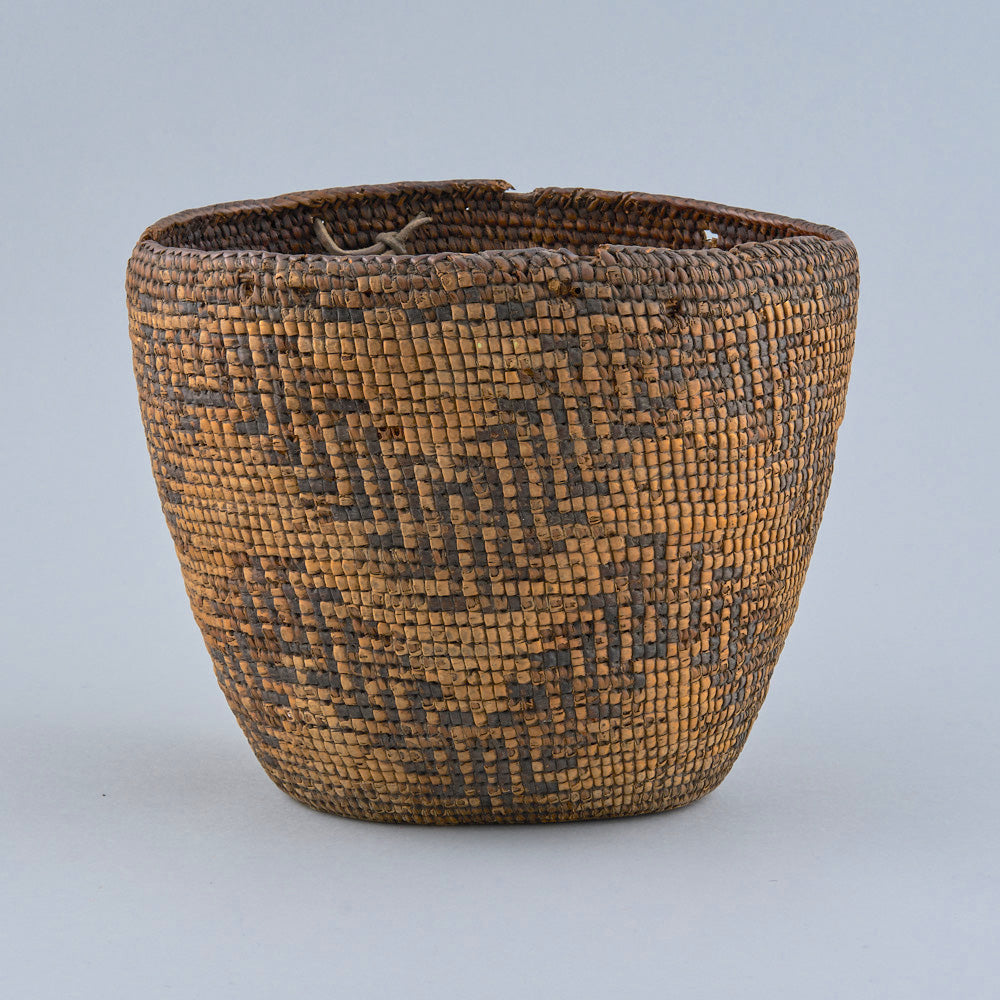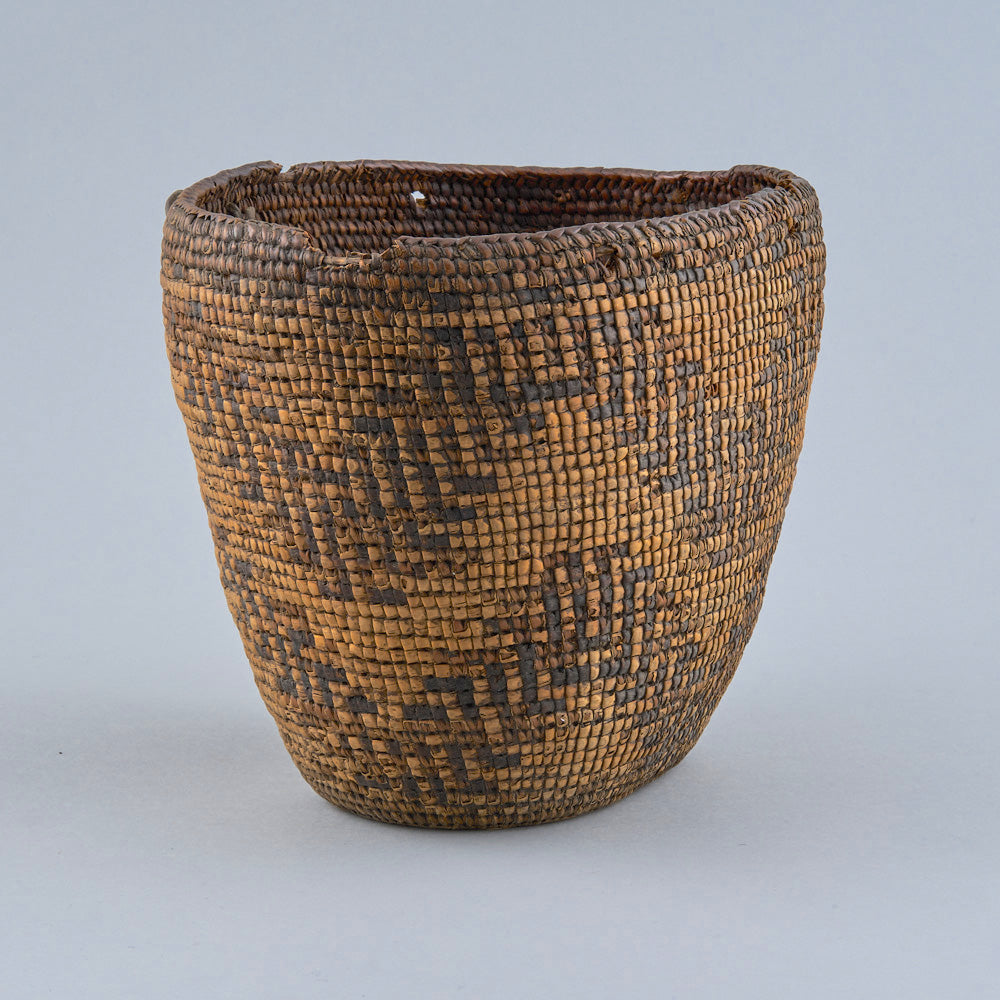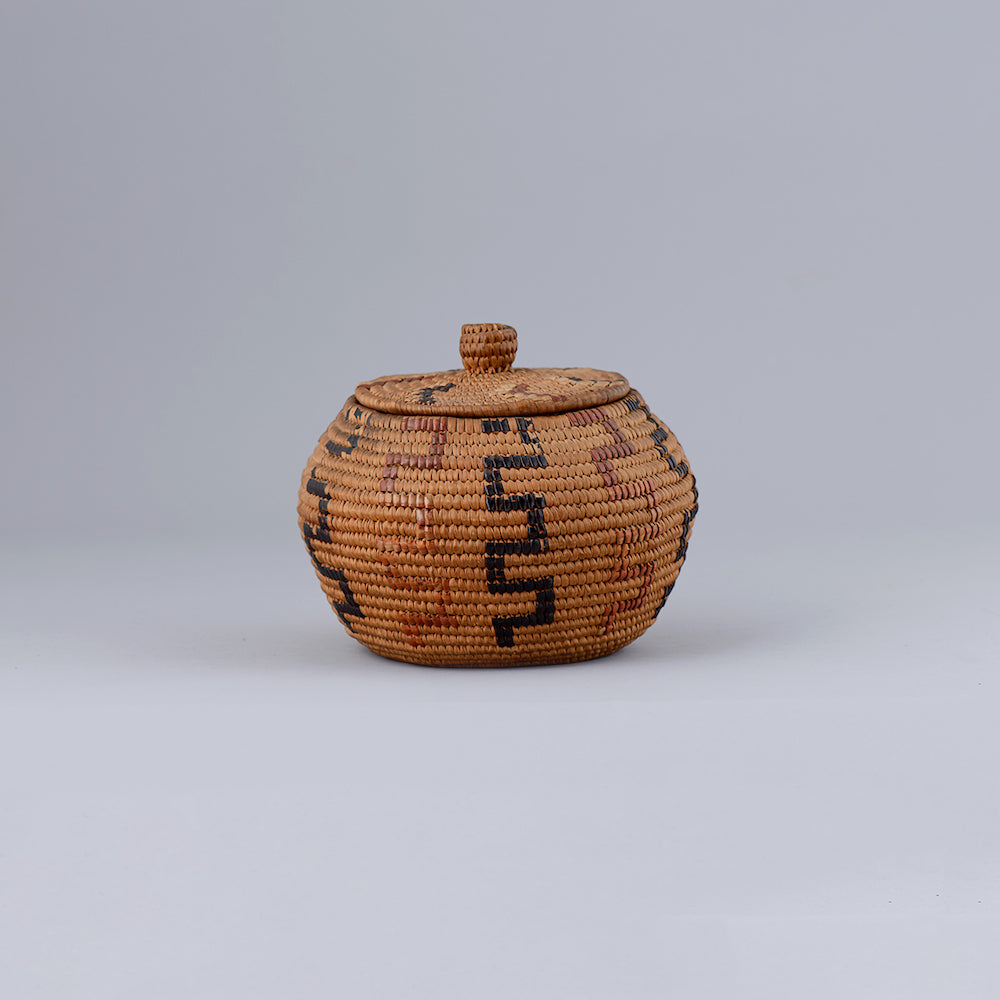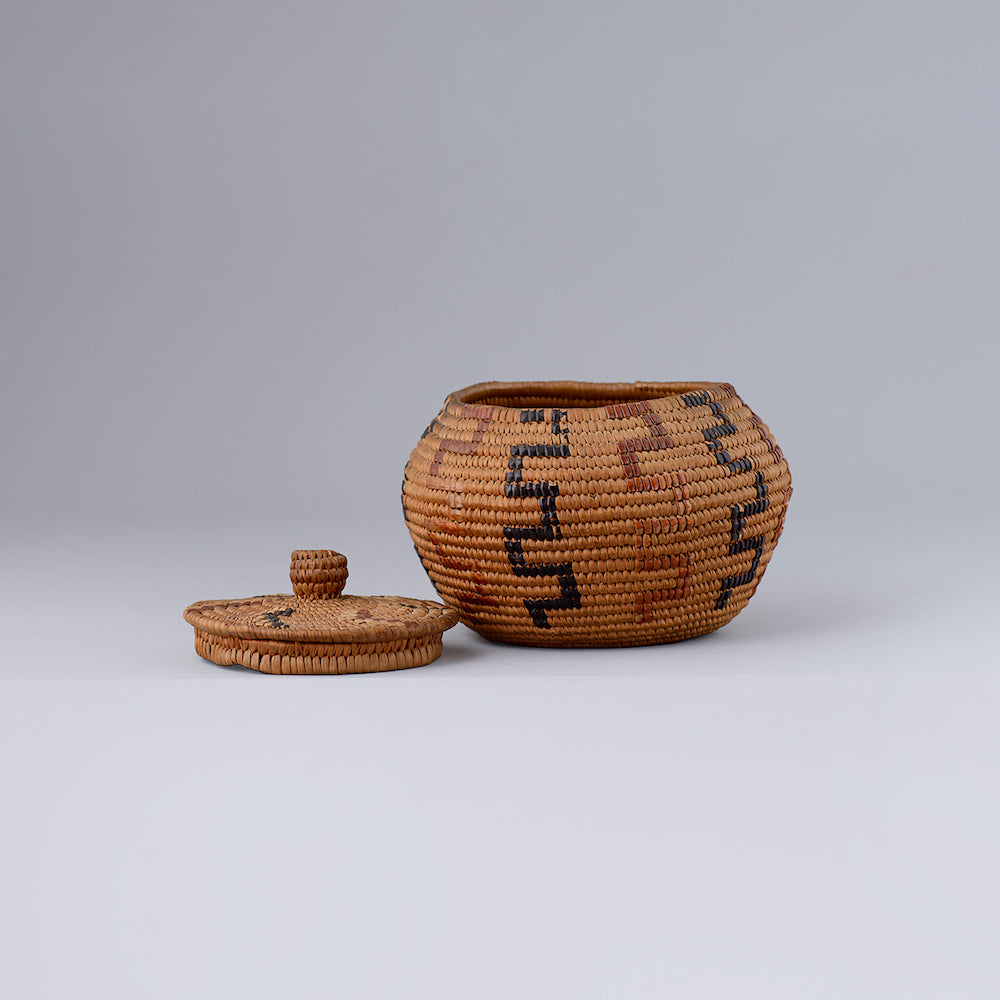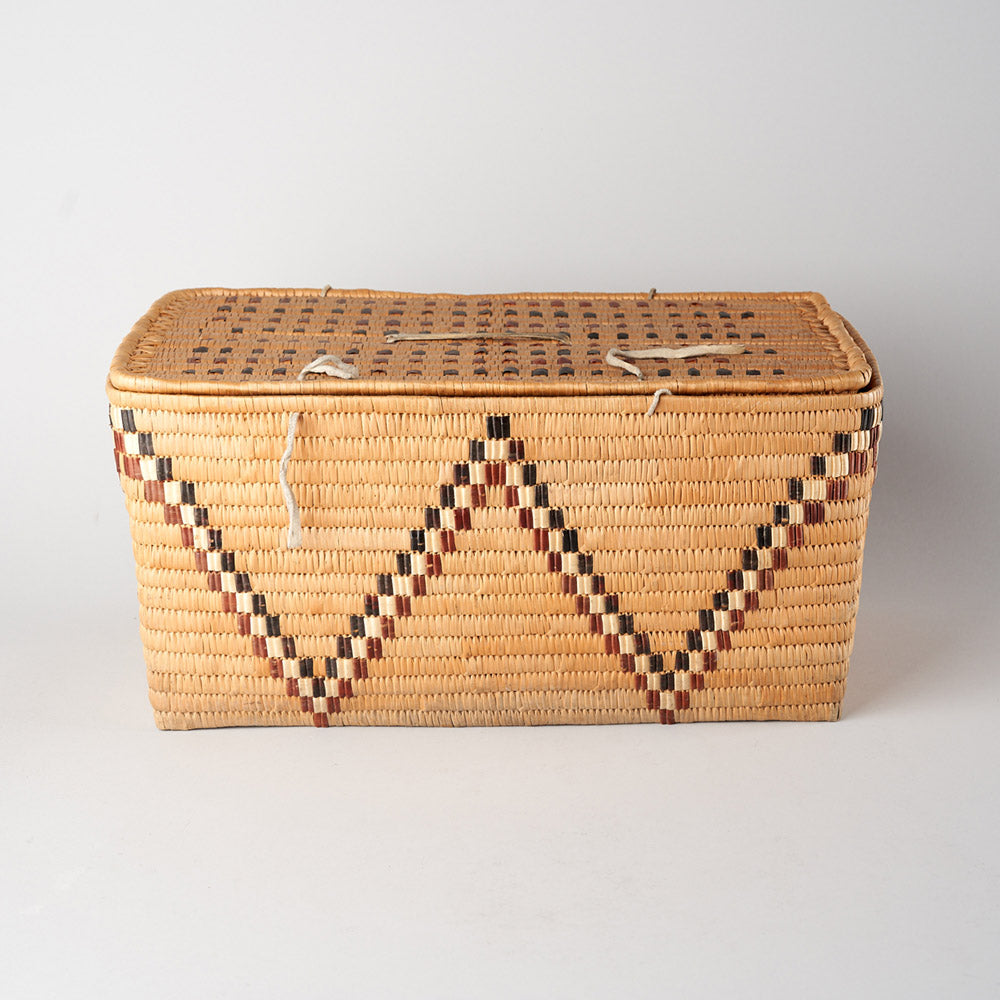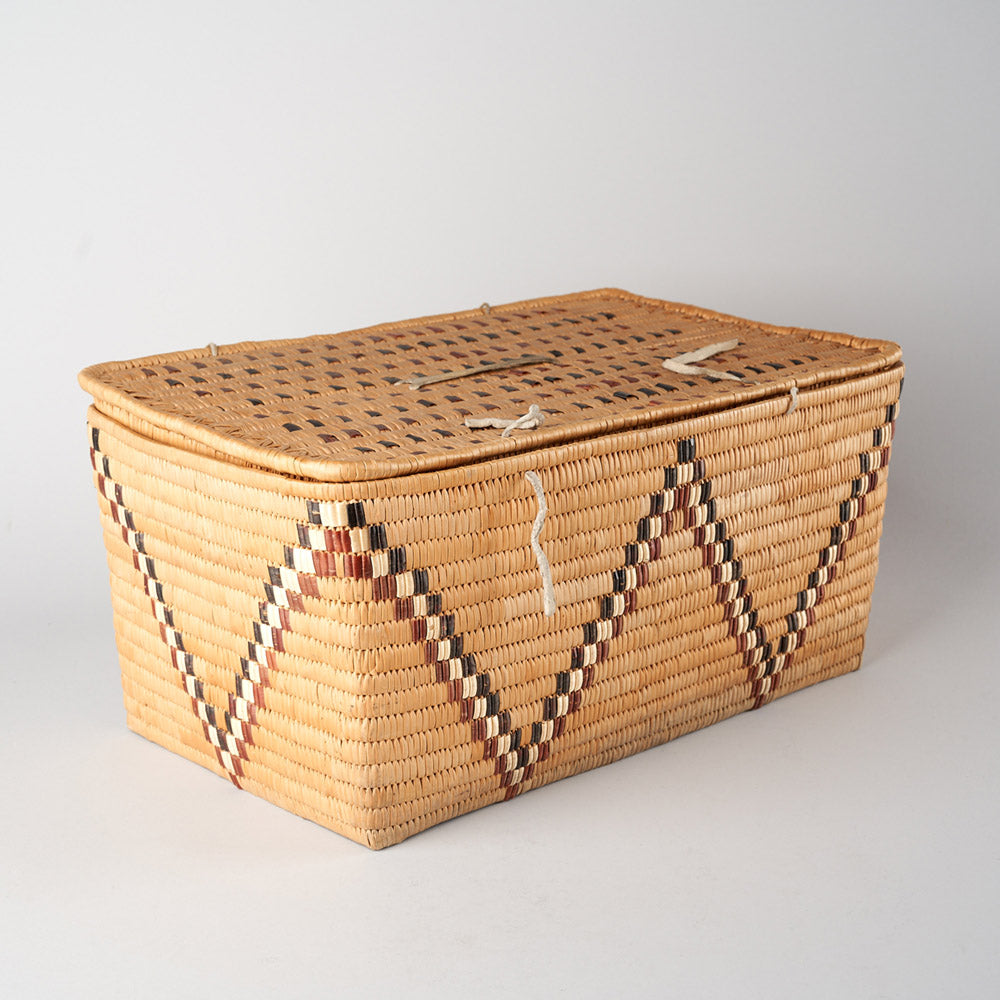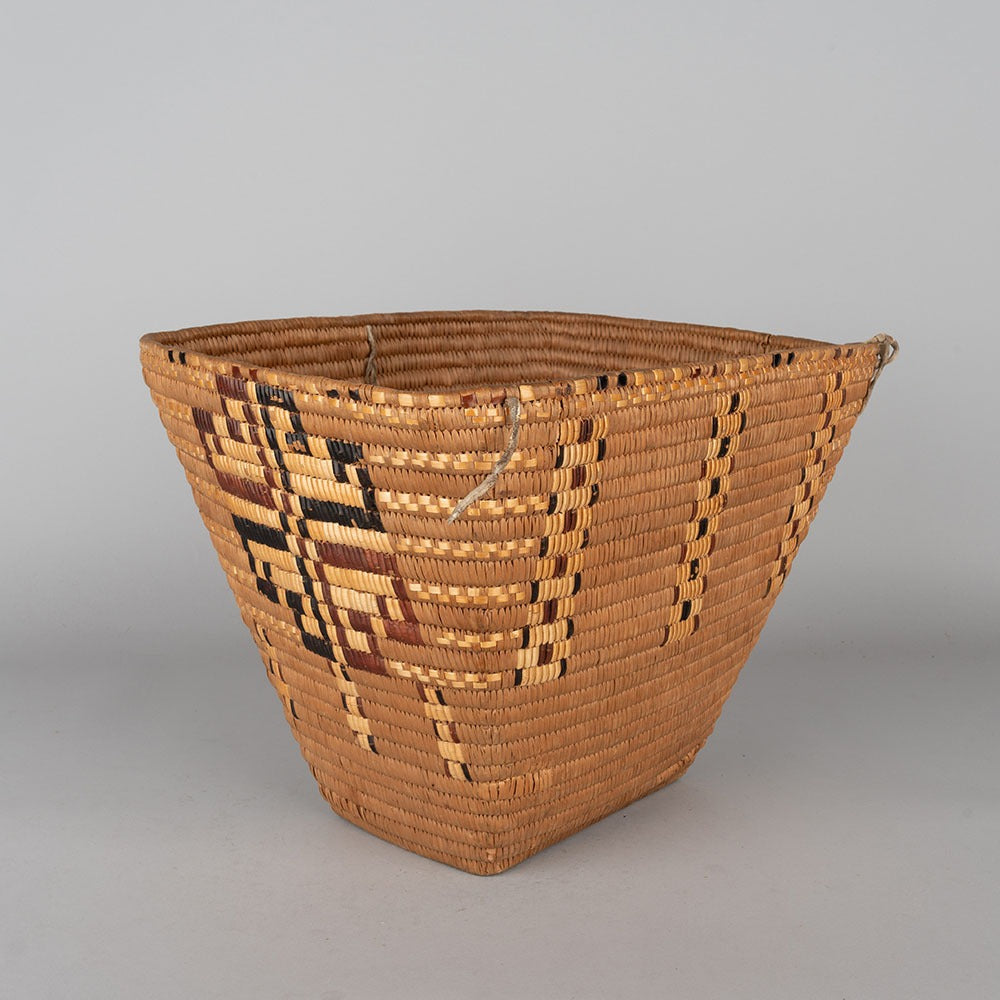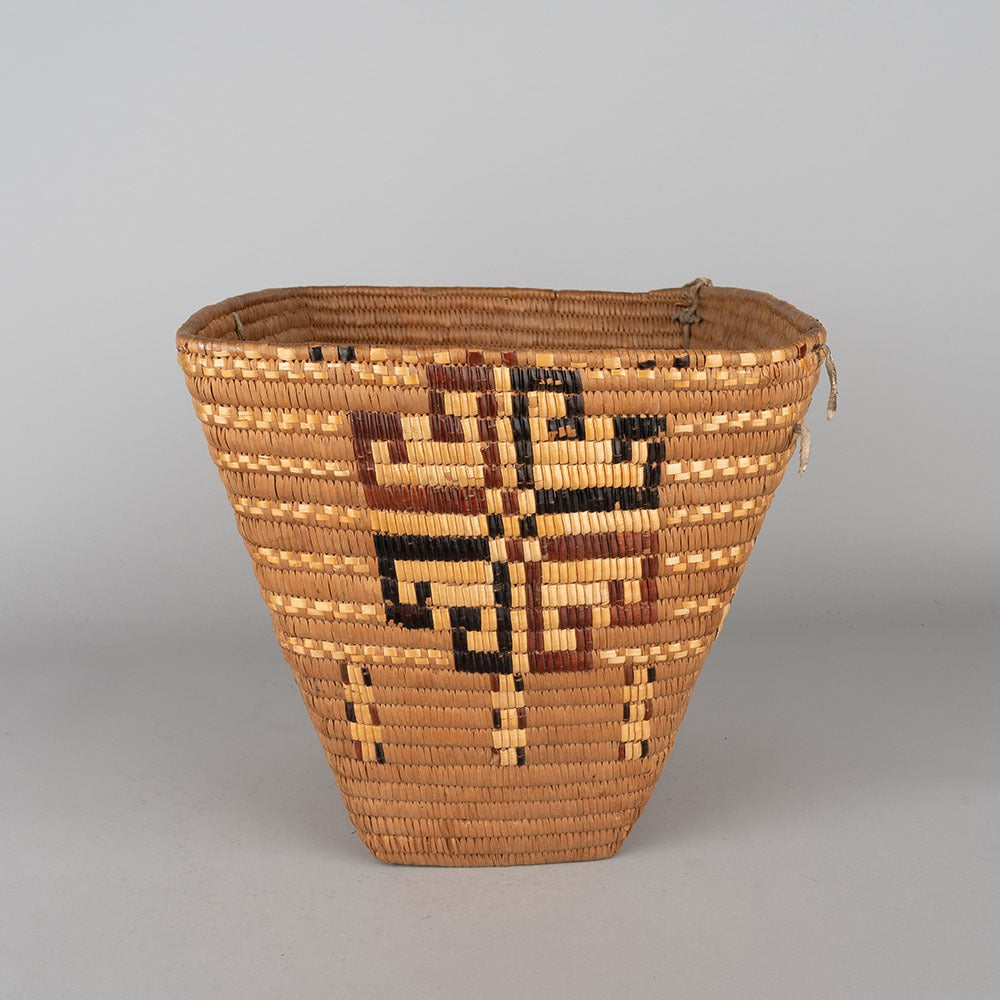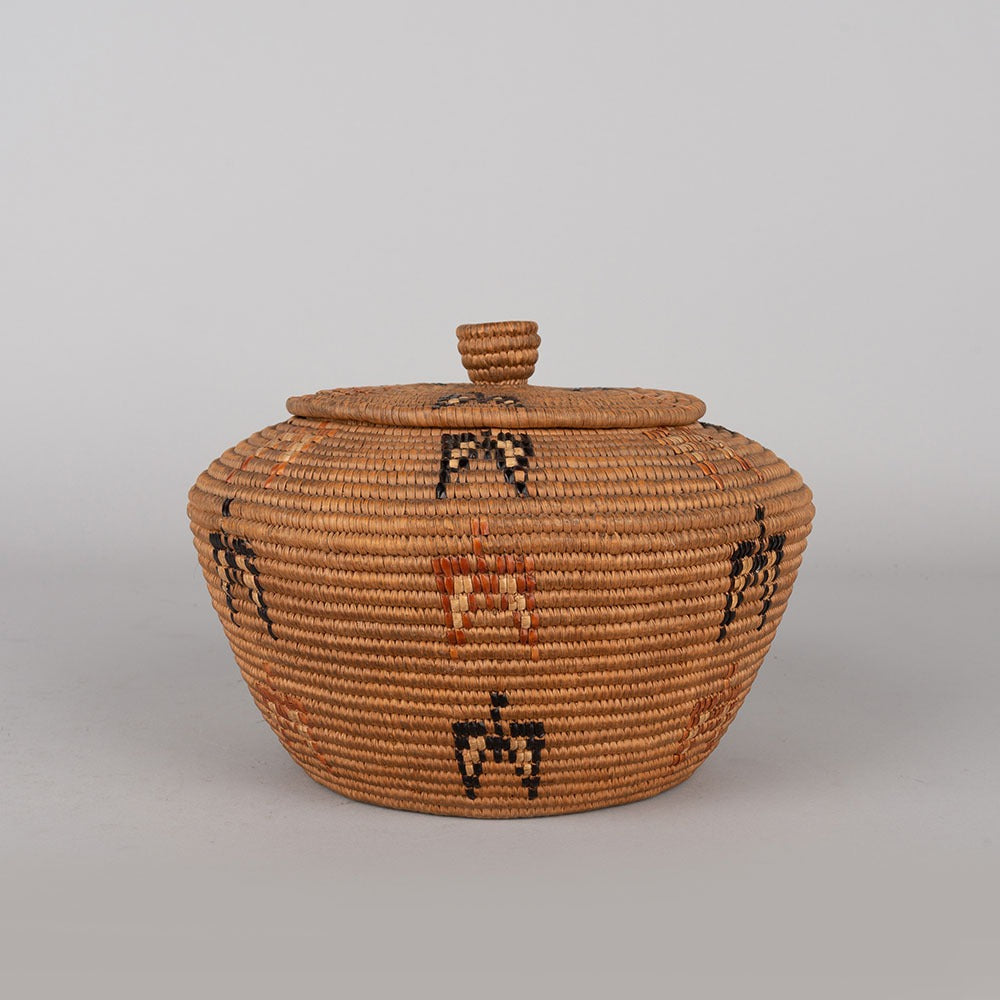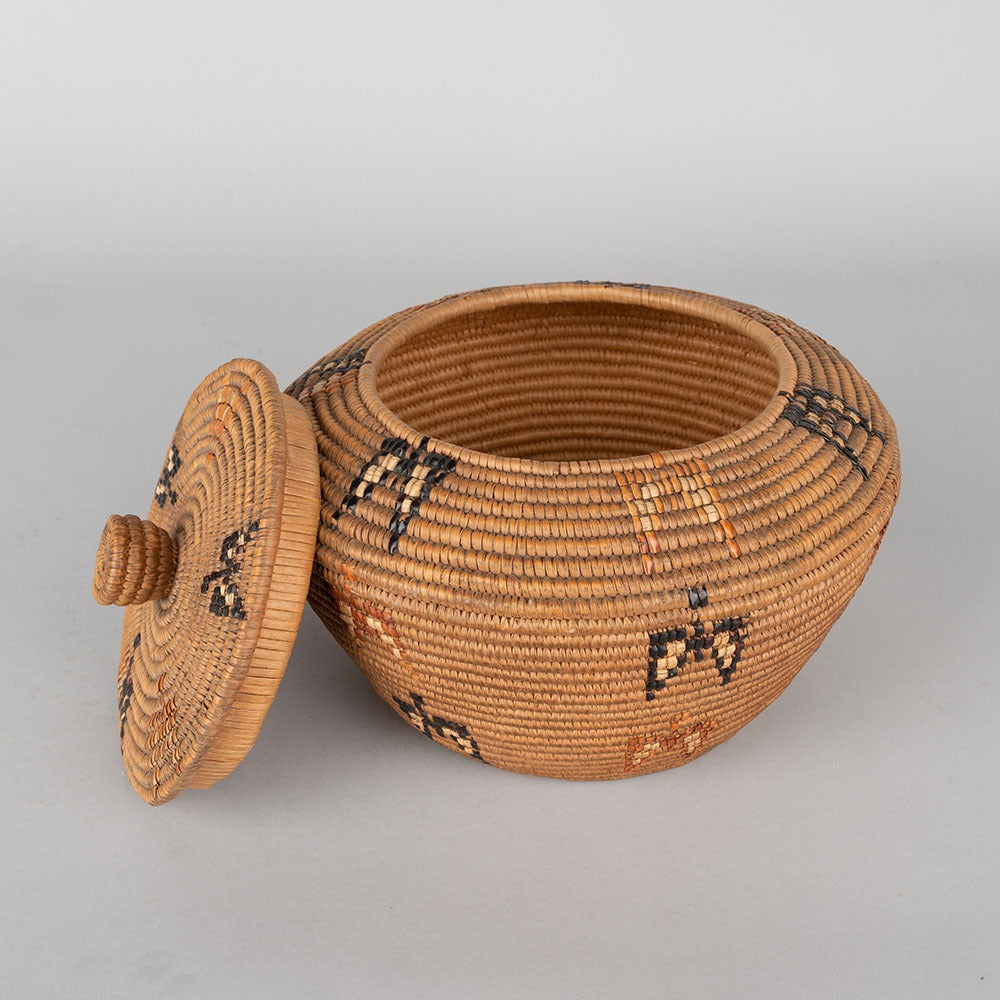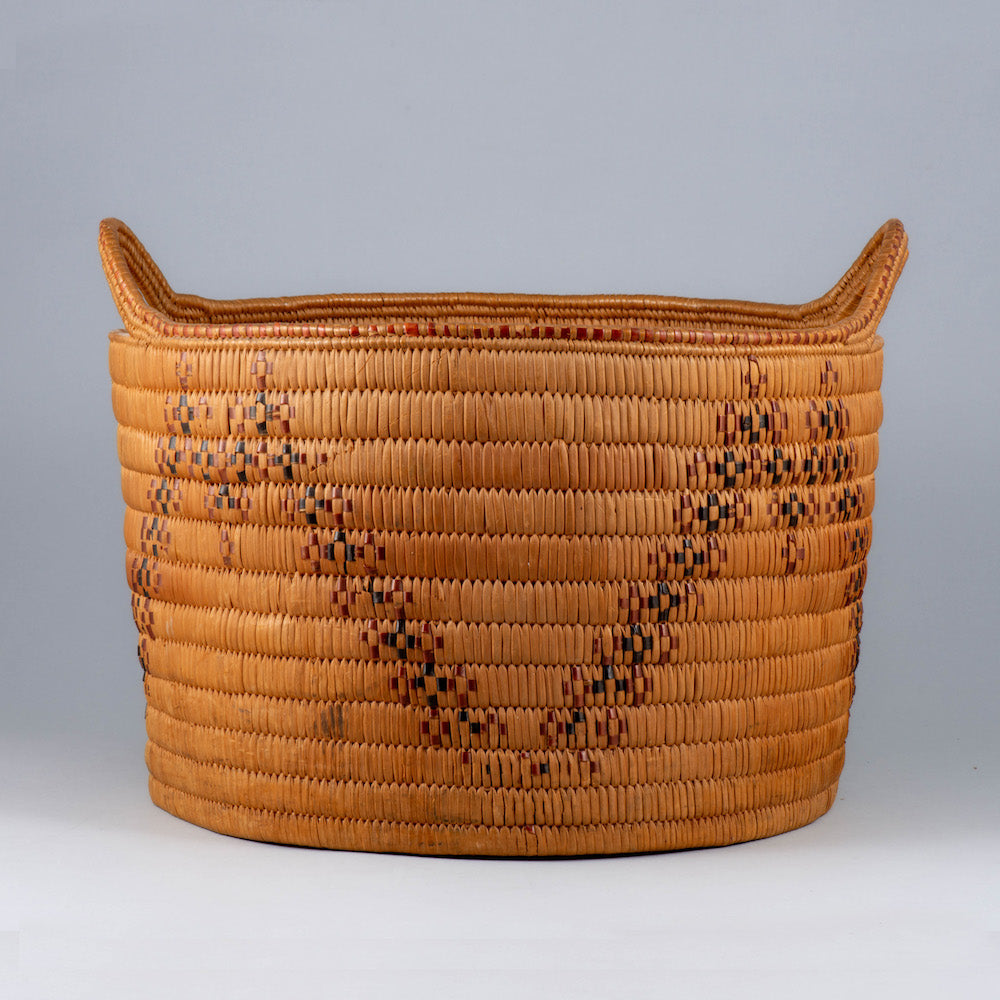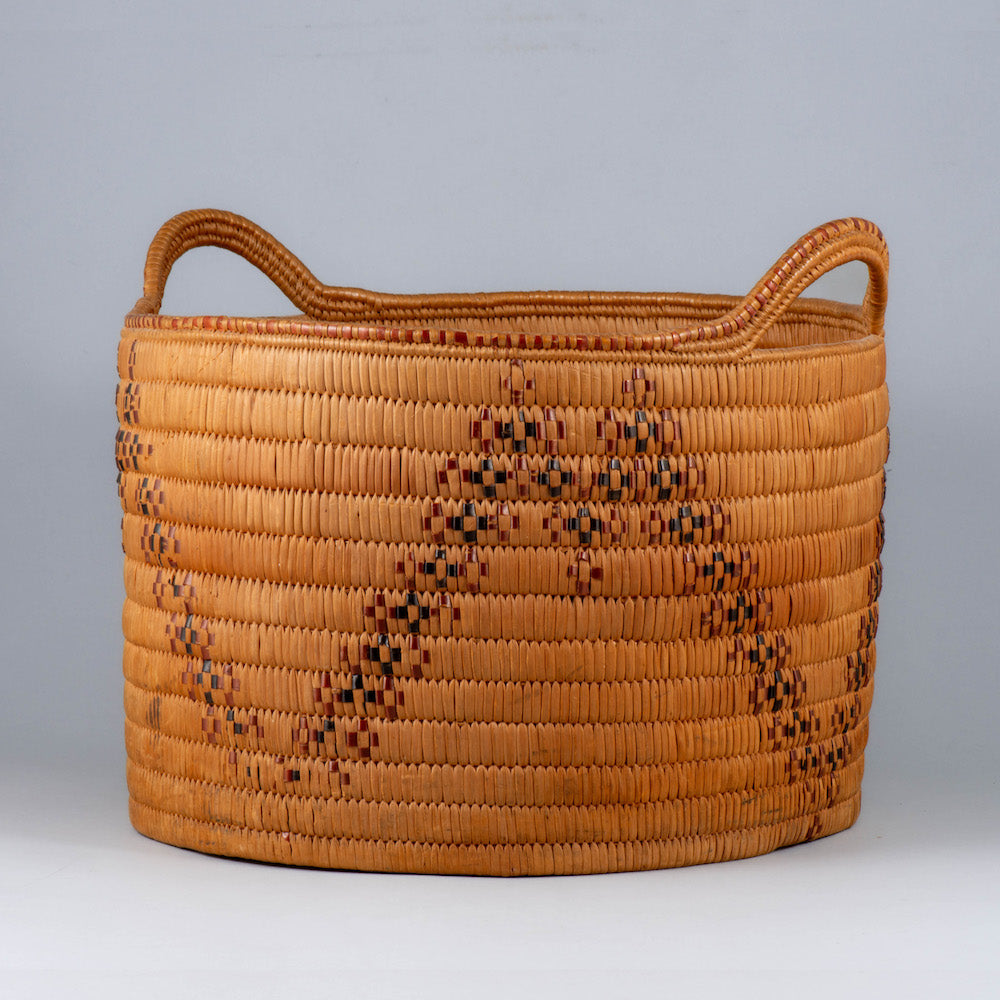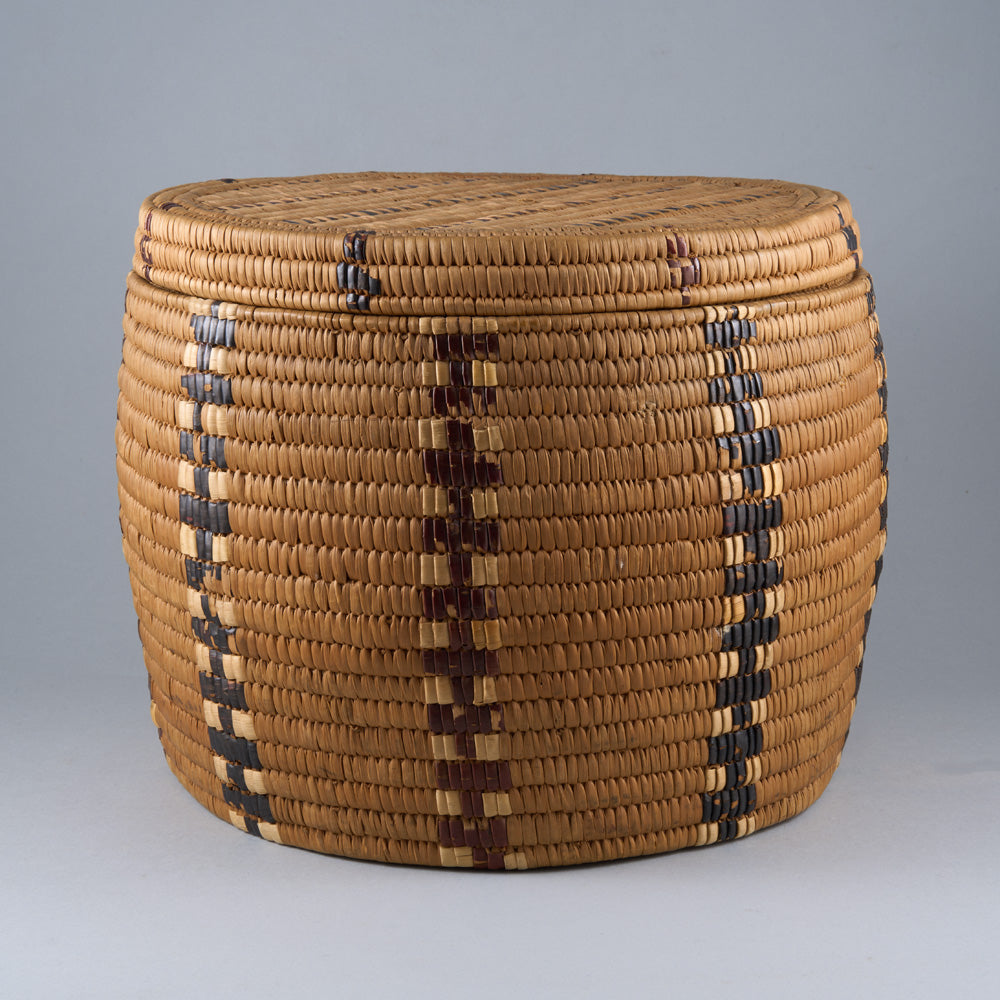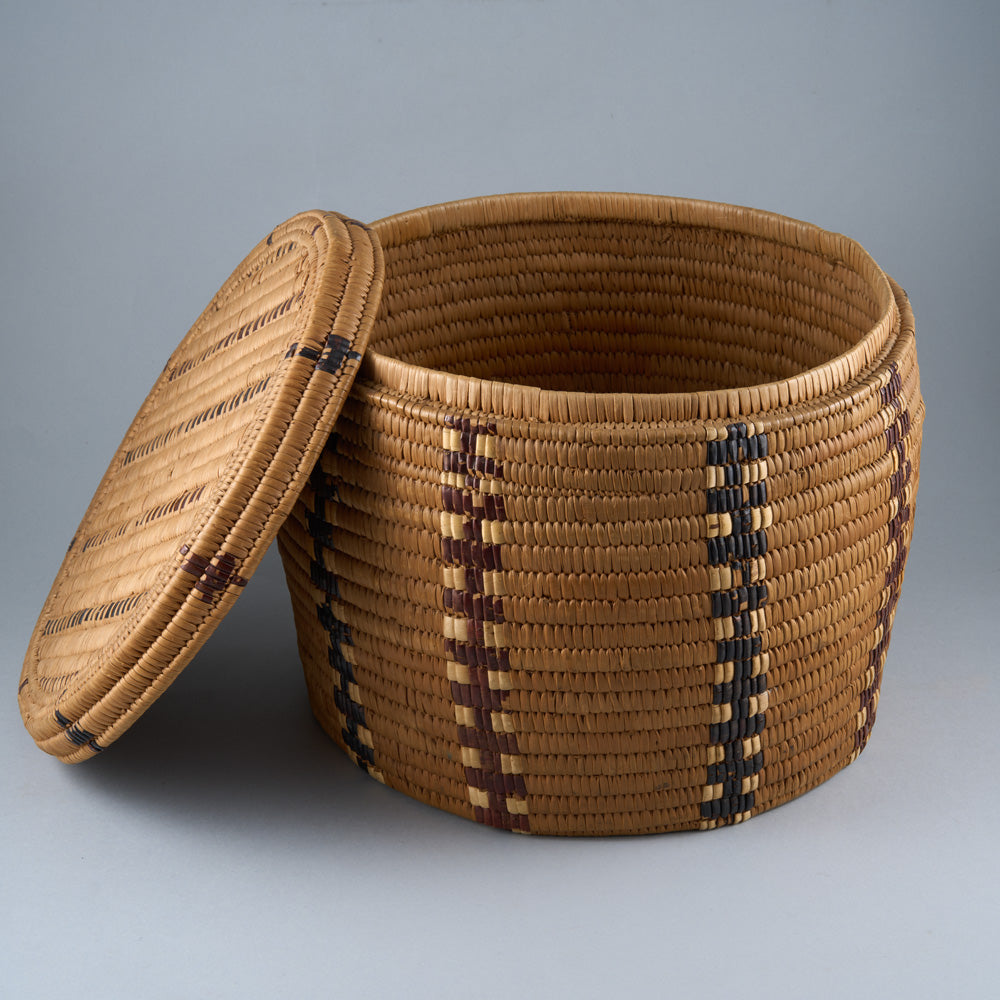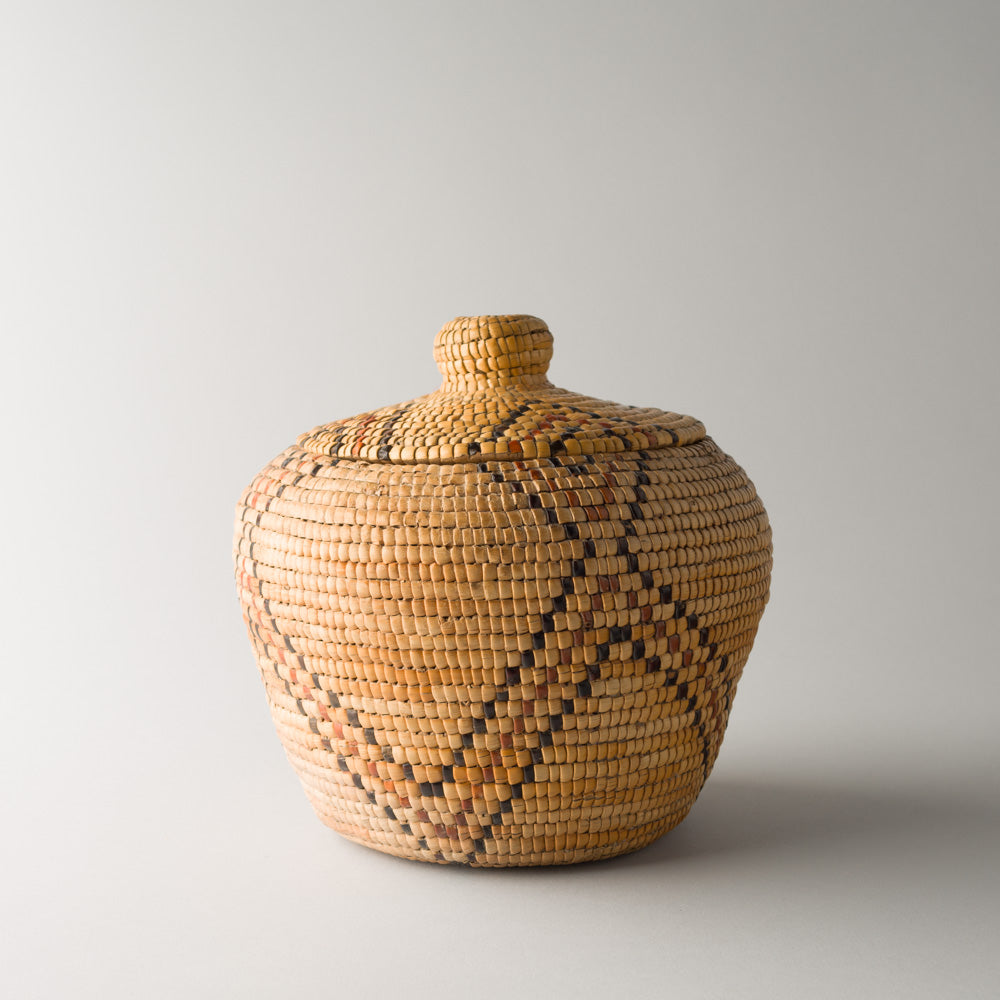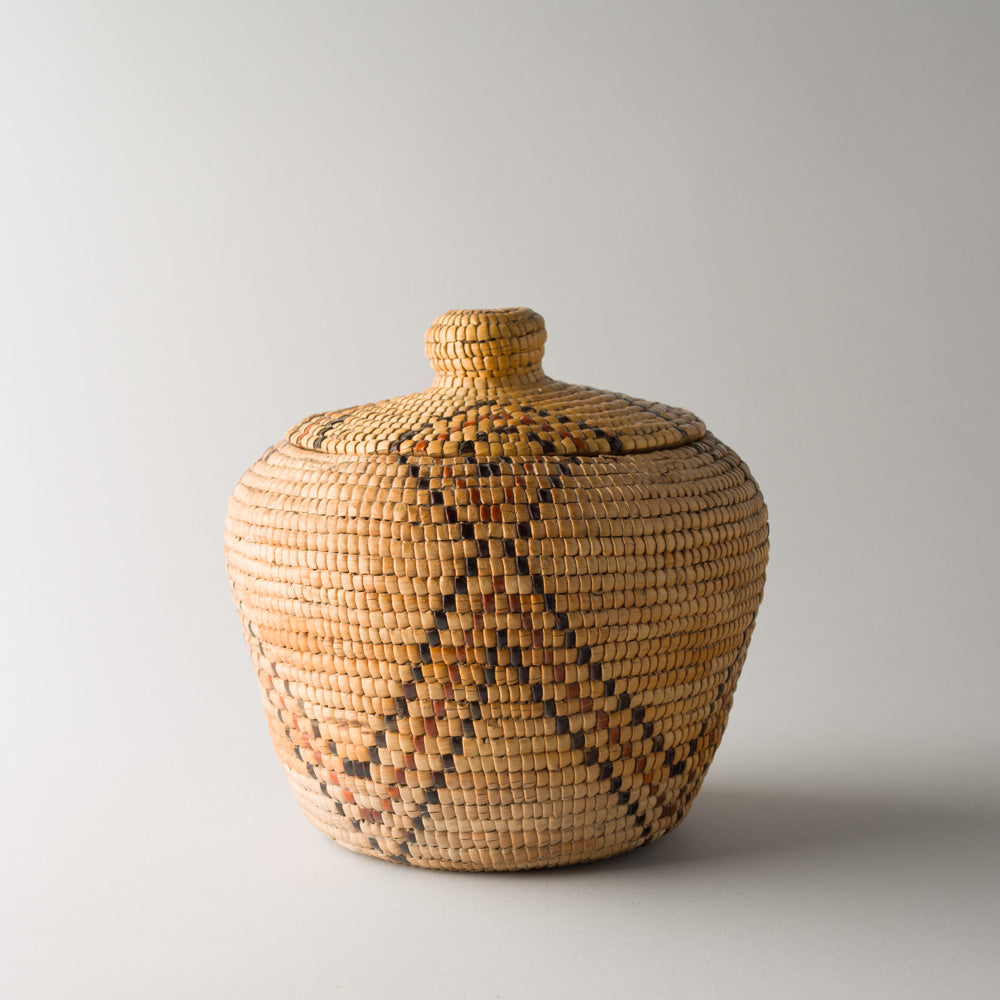It appears that your cart is currently empty

Artist Unknown (Salish)
Large Salish Basket
Artist Unknown (Salish)
Late 19th Century The presence of a leather patch on the top edge of the basket is an indication ...
Late 19th Century The presence of a leather patch on the top edge of the basket is an indication of an old repair, likely done by a member of an indigenous community. The interior is lined with tree sap, a method used to strengthen the seal of the basket and prolong its functional use.
$1,800.00
Lillooet Domed Trunk Basket
Artist Unknown
Circa 1920 Designed after a European trunk.
Circa 1920 Designed after a European trunk.
$1,800.00
Rectangular Salish Lidded Basket
Artist Unknown (Salish)
Traditionally an art practiced only by women, in the past baskets were made for a wide variety of...
Traditionally an art practiced only by women, in the past baskets were made for a wide variety of domestic uses associated with the gathering, storing and cooking of different foods. Similar weaving techniques were also used to make cradles and hats for everyday and ceremonial uses.Most basketry is traditionally woven from long, slender and pliant rootlets of cedar and sometimes spruce, although various grasses are used in some regions. A sharply pointed bone awl is used to split the rootlet ...
$1,400.00
Salish Basket
Artist Unknown (Salish)
Traditionally an art practiced only by women, in the past baskets were made for a wide variety of...
Traditionally an art practiced only by women, in the past baskets were made for a wide variety of domestic uses associated with the gathering, storing and cooking of different foods. Similar weaving techniques were also used to make cradles and hats for everyday and ceremonial uses.Most basketry is traditionally woven from long, slender and pliant rootlets of cedar and sometimes spruce, although various grasses are used in some regions. A sharply pointed bone awl is used to split the rootlet ...
$1,800.00
Salish Basket
Artist Unknown (Salish) (Salish)
Late 19th Century The interior is lined with tree sap, a method used to strengthen the seal of th...
Late 19th Century The interior is lined with tree sap, a method used to strengthen the seal of the basket and prolong its functional use.
$1,200.00
Salish Model Pole
Artist Unknown (Salish) (Salish)
Pole says "Alert Bay 1959" on the backside and "Alert Bay 1958" on the bottom of the base. This p...
Pole says "Alert Bay 1959" on the backside and "Alert Bay 1958" on the bottom of the base. This piece was likely collected in Alert Bay, but is distinctly Salish in style. It's supposed that the piece was purchased from one of a few curio-tourist style shops, many of which carried works from artists of varying Nations along the coast.
$700.00
Salish Model Pole
Artist Unknown (Salish) (Salish)
Shows signs of wear on the top left ear.
Shows signs of wear on the top left ear.
$200.00
1 – 14 product(s) of 14
